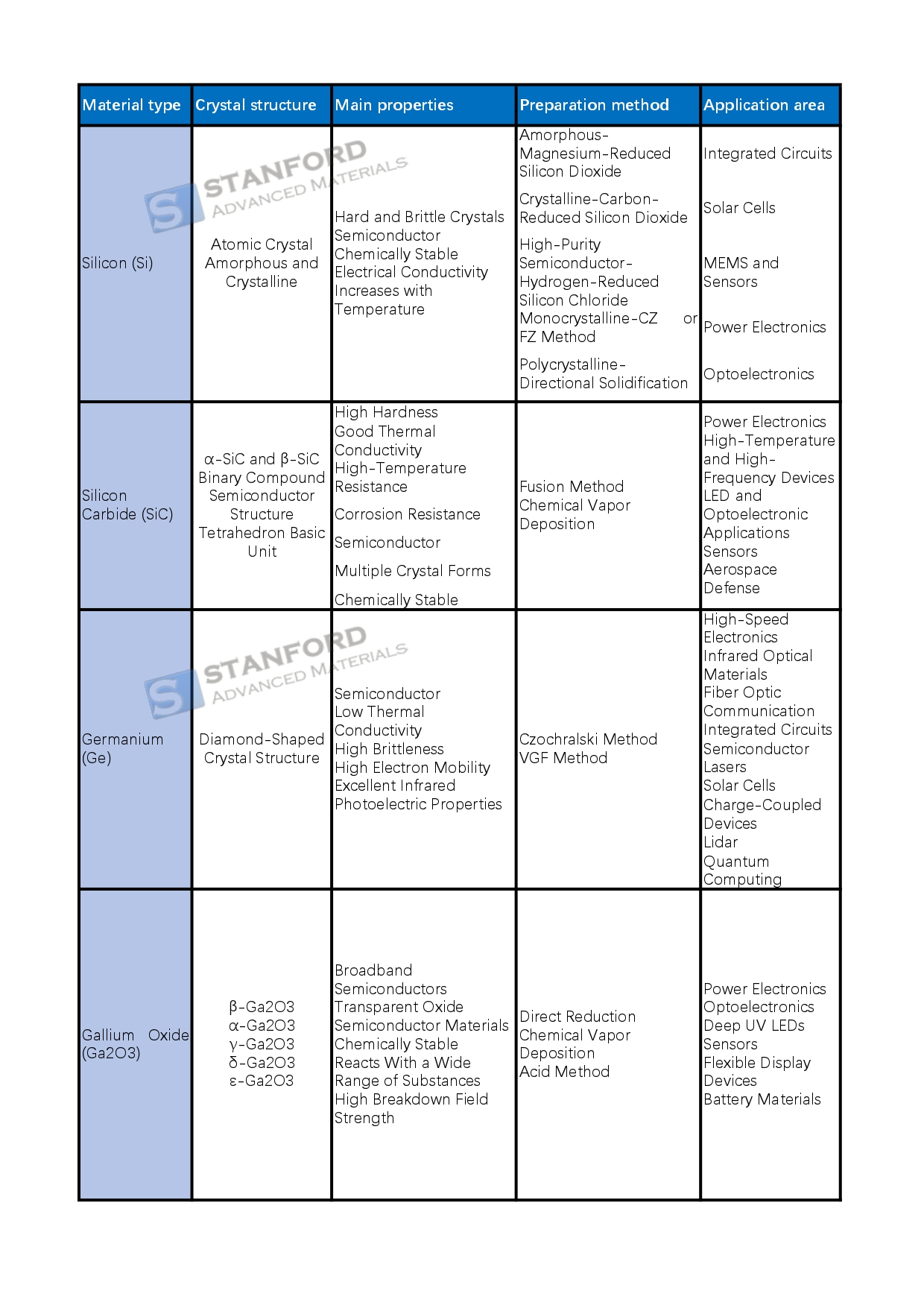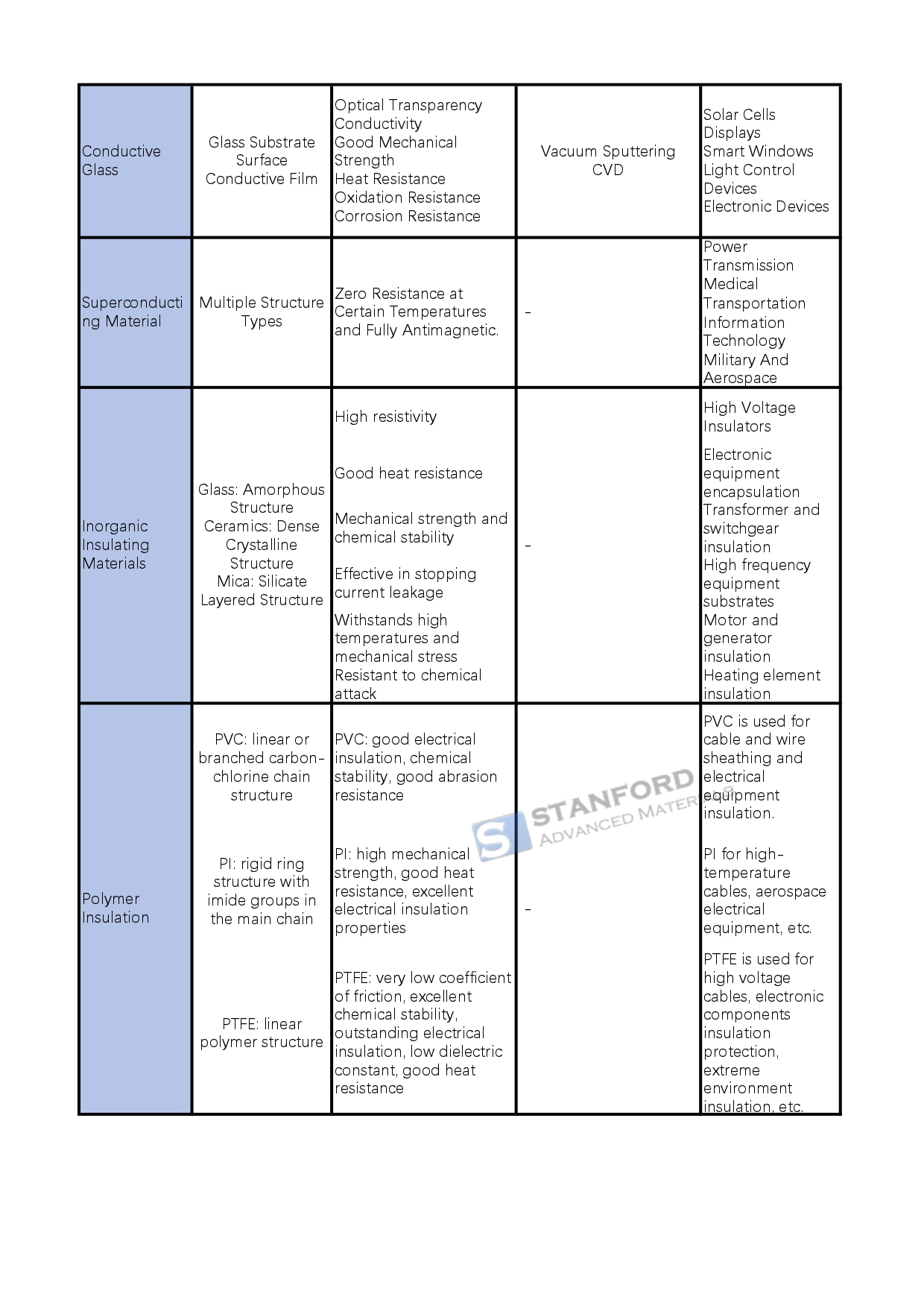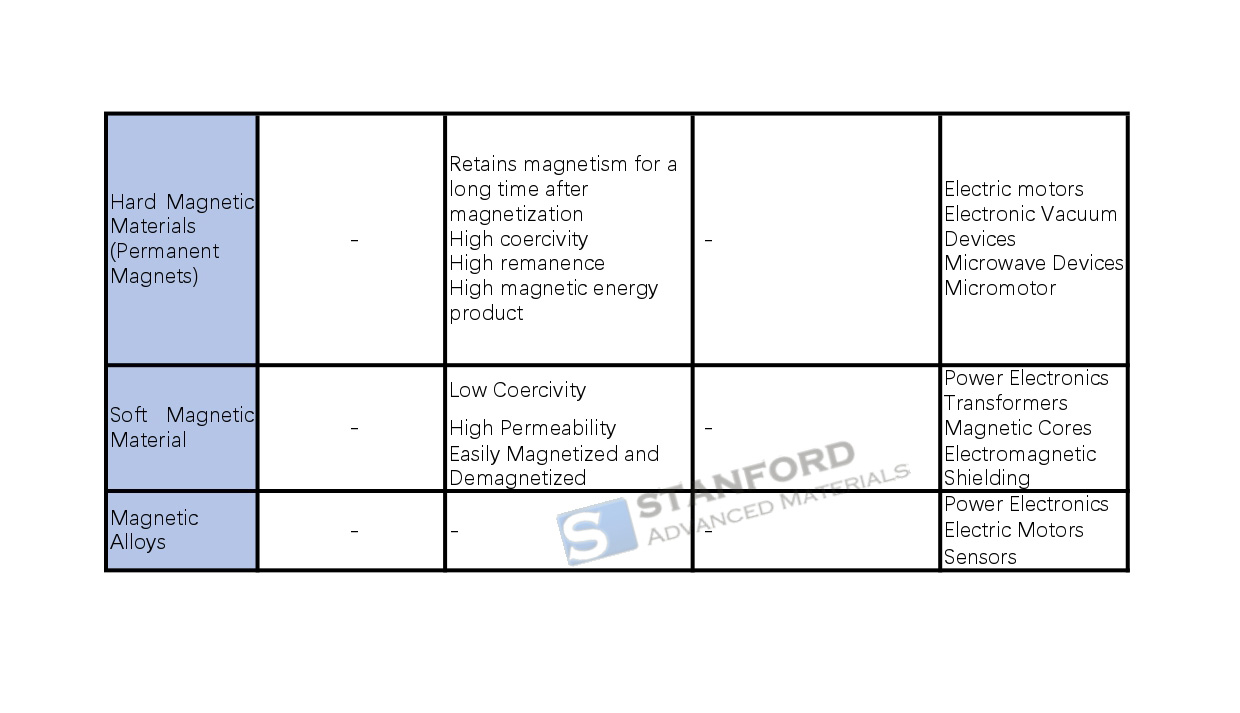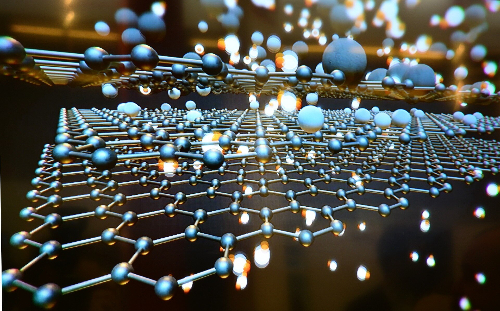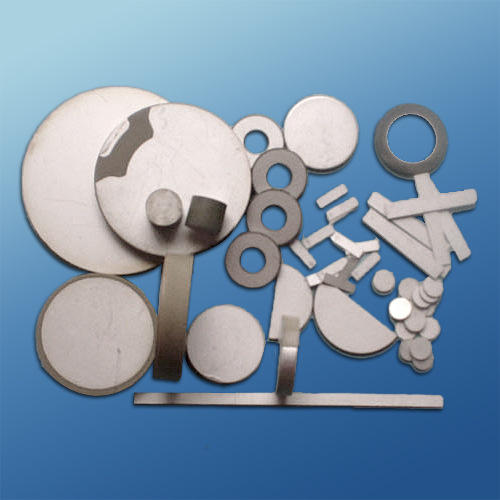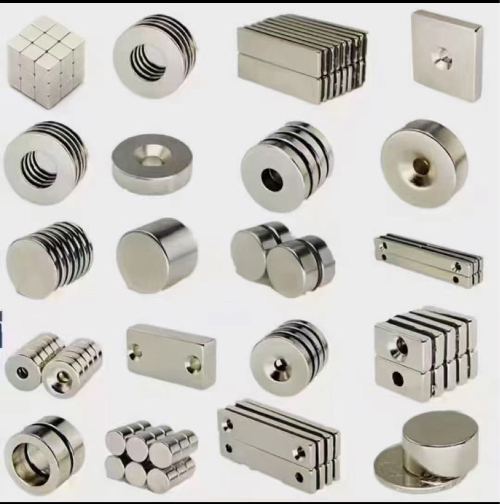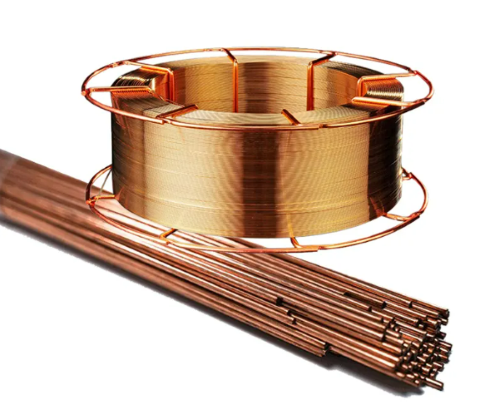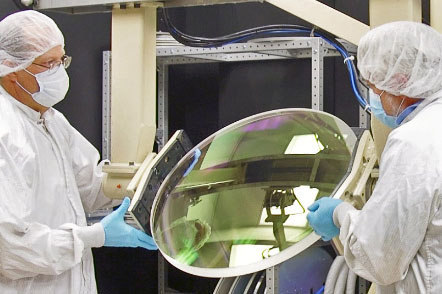La liste essentielle des matériaux électroniques
1 Introduction
Les matériaux électroniques jouent un rôle tout à fait crucial dans le paysage en évolution rapide de l'électronique moderne. Ils constituent les éléments fondamentaux qui sous-tendent la fonctionnalité et les performances d'une vaste gamme d'appareils électroniques, allant des smartphones et ordinateurs portables omniprésents aux équipements aérospatiaux et médicaux hautement sophistiqués. Ces matériaux déterminent les propriétés électriques, thermiques, mécaniques et optiques des appareils, dictant ainsi leurs capacités et leurs limites.
Le développement et l'innovation en matière de matériaux électroniques ont été la force motrice du progrès continu de l'industrie électronique. Avec la demande sans cesse croissante de produits électroniques plus petits, plus rapides, plus économes en énergie et très fiables, la recherche et l'utilisation de matériaux électroniques avancés sont devenues plus urgentes que jamais. Dans les sections suivantes, nous nous lancerons dans une exploration approfondie de plusieurs matériaux électroniques clés, notamment le silicium, le carbure de silicium, le germanium, les composés de gallium, les matériaux à base de carbone, les matériaux conducteurs et isolants, et les matériaux magnétiques. En comprenant leurs propriétés uniques, leurs processus de fabrication et leurs diverses applications, nous pouvons acquérir une perspective globale sur l'importance et le potentiel de ces matériaux pour façonner l'avenir de l'électronique.
2 Le silicium et les matériaux apparentés
Le silicium (Si), de numéro atomique 14, est un matériau cristallin, quasi-métallique et semi-conducteur, dur et cassant, qui se présente à la fois sous forme amorphe et cristalline et qui est abondant dans la croûte terrestre. Le silicium possède quatre électrons de valence dans la couche externe de l'atome et est chimiquement relativement stable, ce qui le rend difficile à réagir avec d'autres substances à température ambiante. En tant que matériau semi-conducteur, la conductivité électrique du silicium augmente avec la température et il est largement utilisé dans divers appareils électroniques.
Lors de l'extraction et de la production de silicium, le silicium amorphe est généralement obtenu en réduisant le dioxyde de silicium avec du magnésium. En revanche, le silicium cristallin est produit dans un four électrique en réduisant le dioxyde de silicium avec du carbone. Le silicium semi-conducteur de haute pureté peut être préparé par réduction à l'hydrogène du chlorure de silicium. Le silicium monocristallin est généralement produit par la méthode Czochralski ou par fusion de zone (méthode FZ), tandis que le silicium polycristallin est produit par solidification directionnelle.
Le silicium a un large éventail d'applications dans l'industrie électronique, notamment en tant que substrat de puce dans les circuits intégrés, où il constitue un matériau idéal pour la fabrication de transistors. En outre, le silicium monocristallin, le silicium polycristallin et les films minces de silicium sont largement utilisés dans les cellules solaires. Dans le domaine des systèmes microélectromécaniques (MEMS) et des capteurs, le silicium est utilisé dans la fabrication d'accéléromètres, de gyroscopes et de capteurs de pression. Le silicium est également utilisé dans l'électronique de puissance pour fabriquer des dispositifs semi-conducteurs de puissance tels que les MOSFET (transistors à effet de champ à semi-conducteur à oxyde métallique) et les IGBT (transistors bipolaires à porte isolée). Dans le domaine de l'optoélectronique, les photodiodes en silicium sont largement utilisées dans les systèmes de communication optique.
Les avantages du silicium sont ses réserves abondantes, son utilisation durable, sa pureté contrôlée et son faible coût. Cependant, il présente certains inconvénients, tels que ses faibles performances à haute température et sa bande interdite étroite, qui limitent son utilisation dans les applications à haute vitesse et à haute fréquence.
Pour en savoir plus : Matériaux électroniques essentiels : Partie 1 - Silicium
Fig.1 Produits à base de silicium
3 Carbure de silicium (SiC)
Lecarbure de silicium (SiC) est un matériau semi-conducteur à large bande doté d'une grande dureté, d'une bonne conductivité thermique, d'une haute température et d'une résistance à la corrosion. Sa formule chimique est SiC, et il existe différentes structures cristallines, les plus courantes étant α-SiC et β-SiC. Le carbure de silicium produit industriellement présente différentes couleurs en raison de la présence de différentes impuretés. Grâce aux techniques de dopage, il est possible de modifier la structure de ses niveaux d'énergie et d'ajuster ainsi ses propriétés électroniques et physiques.
Les principaux procédés de fabrication du carbure de silicium sont la fusion et le dépôt chimique en phase vapeur (CVD). La méthode de fusion permet de former du carbure de silicium en mélangeant et en faisant fondre du silicium et du graphite à des températures élevées, puis en les refroidissant. Le dépôt chimique en phase vapeur dépose le carbure de silicium sur la surface du substrat par une réaction chimique en phase gazeuse et est couramment utilisé pour produire des matériaux en couches minces de haute qualité.
Le carbure de silicium est utilisé dans une grande variété d'applications. En électronique de puissance, le carbure de silicium est utilisé dans les dispositifs de conversion d'énergie pour améliorer l'efficacité des véhicules électriques et des systèmes d'énergie renouvelable. Dans les dispositifs à haute température et à haute fréquence, le carbure de silicium convient aux stations de base 5G et à l'électronique militaire en raison de sa capacité à maintenir un fonctionnement stable dans des conditions extrêmes. En outre, le SiC joue un rôle dans les applications LED et optoélectroniques, initialement utilisé dans les LED bleues et maintenant utilisé pour la détection de la lumière à des longueurs d'onde spécifiques. Dans le domaine des capteurs, le carbure de silicium est couramment utilisé pour la détection dans des environnements à haute température, à haute pression et sous rayonnement, en raison de sa fiabilité dans des environnements extrêmes. La grande fiabilité du carbure de silicium le rend également populaire pour les applications aérospatiales et de défense.
L'avantage du carbure de silicium est son excellente performance à haute température, à haute pression et à haute fréquence, qui lui confère une grande efficacité de conversion énergétique. Cependant, il présente également certains inconvénients, tels qu'un coût plus élevé, un processus de fabrication complexe, et la fiabilité de ses dispositifs doit encore être améliorée.
Pour en savoir plus : Matériaux électroniques essentiels : Partie 2 - Carbure de silicium
Fig. 2 Puce en carbure de silicium
4 Germanium et matériaux connexes
Legermanium (Ge) est un élément semi-conducteur dont le numéro atomique est 32 et dont la structure cristalline est similaire à celle du diamant. Le germanium a une densité de 5,323 g/cm³, un point de fusion de 937,4°C et un point d'ébullition de 2833°C. En tant que matériau semi-conducteur, le germanium a une bande interdite de 0,66 eV et présente une bonne conductivité électrique à basse température, avec une excellence particulière dans les propriétés optoélectroniques infrarouges. Cependant, le germanium a une faible conductivité thermique et un haut degré de fragilité, propriétés qui limitent ses performances dans certaines applications.
Le processus de fabrication du germanium est généralement utilisé pour préparer le germanium monocristallin par la méthode de l'étirage droit (méthode Czochralski) et la méthode de solidification par gradient vertical (méthode VGF). Dans la méthode d'étirement, le germanium liquide fondu est entraîné dans la cristallisation pour obtenir des cristaux uniques, tandis que la méthode de solidification par gradient vertical guide la croissance des cristaux en contrôlant le gradient de température afin de garantir leur qualité et leur pureté.
Le germanium a des applications importantes dans plusieurs domaines. Dans l'électronique à grande vitesse, le germanium est utilisé dans les transistors à haute fréquence et les dispositifs de communication sans fil, car il possède une mobilité électronique élevée qui permet un traitement des signaux à grande vitesse. En outre, le germanium est un important matériau optique infrarouge et est largement utilisé dans les détecteurs infrarouges et les systèmes d'imagerie. En raison de ses bonnes propriétés optoélectroniques, le germanium est également dopé dans les fibres optiques pour en améliorer les performances et il est utilisé dans les communications optiques, les dispositifs de conversion photovoltaïque et les cellules solaires. Dans les circuits intégrés, le germanium est associé au silicium pour former des alliages qui améliorent encore les performances. Le germanium est également utilisé dans la fabrication de lasers à semi-conducteurs, de dispositifs à couplage de charge (CCD) et de LIDAR, et a des applications potentielles dans l'informatique quantique et la technologie quantique.
Les principaux avantages du germanium sont une grande mobilité des électrons, une faible bande interdite, une transmission élevée dans l'infrarouge et une bonne compatibilité avec le silicium, ce qui le rend bien adapté à une utilisation dans des domaines tels que les cellules solaires à haut rendement et l'informatique quantique. Cependant, il présente également des inconvénients importants, notamment une faible conductivité thermique, un prix élevé, une difficulté à faire croître les cristaux et une échelle de production industrielle restreinte, ce qui constitue un défi pour l'utilisation généralisée du germanium.
Pour en savoir plus : Matériaux électroniques essentiels : Partie 3 - Germanium
Fig. 3 Le germanium pour la fabrication de puces
5 Composés du gallium
Oxyde de gallium (Ga2O3): semi-conducteur à large bande avec différentes structures cristallines, telles que β-Ga2O3, α-Ga2O3, etc. Il est chimiquement stable et peut réagir avec diverses substances. Il peut être préparé par réduction directe, dépôt chimique en phase vapeur et méthode acide. Largement utilisé dans l'électronique de puissance, les dispositifs optoélectroniques (tels que les détecteurs ultraviolets et les diodes électroluminescentes à ultraviolet profond), les capteurs et d'autres domaines, l'échelle du marché croît rapidement et la chaîne industrielle s'améliore progressivement.
L'arséniure de gallium (GaAs): solide gris noir, point de fusion 1238 ° C, est un important semi-conducteur composé Ⅲ-V, avec une structure cristalline cubique, d'excellentes propriétés électroniques, un faible bruit et une tension de claquage élevée. Il est principalement préparé par solidification à gradient vertical (VGF), étirage direct encapsulé dans un liquide (LEC), Bridgman horizontal (HB), dépôt chimique en phase vapeur (CVD), et d'autres méthodes. Il est largement utilisé dans les domaines des micro-ondes, de l'optoélectronique, des communications, des cellules solaires, de la microélectronique et autres.
Nitrure de gallium (GaN) : La structure cristalline consiste en un réseau d'atomes de gallium et d'azote avec une large bande interdite, une grande dureté, une conductivité thermique élevée, une bonne stabilité chimique et d'autres caractéristiques. Il est cultivé par des réactions de dépôt chimique en phase vapeur, telles que MOCVD et d'autres méthodes. Il est largement utilisé dans les nouveaux dispositifs électroniques (par exemple, les dispositifs à haute puissance et à haute fréquence), les dispositifs optoélectroniques (par exemple, les dispositifs d'émission de lumière à courte longueur d'onde), les capteurs et d'autres domaines, ce qui favorise les progrès technologiques connexes.
En savoir plus : Matériaux électroniques essentiels : Partie 4 - Composés du gallium
Fig. 4 Matériaux semi-conducteurs à base d'oxyde de gallium
6 Matériaux à base de carbone
Graphène: structure monocouche dans laquelle les atomes de carbone sont hybridés avec des sp² pour former un réseau hexagonal en nid d'abeille, avec d'excellentes propriétés optiques, électriques et mécaniques. Avec une mobilité élevée des électrons, il a des applications potentielles dans les circuits intégrés, les transistors à effet de champ, les diodes électroluminescentes organiques, les capteurs chimiques et les dispositifs optoélectroniques.
Nanotubes de carbone (NTC) : Les atomes de carbone sont disposés en tubes circulaires coaxiaux, avec des propriétés électriques uniques, divisés en nanotubes de carbone métalliques et semi-conducteurs. Ils peuvent être utilisés pour fabriquer des transistors à effet de champ très performants, des capteurs électroniques, des cellules solaires, etc. afin d'améliorer les performances des dispositifs connexes.
Fullerènes (Fullerenes): molécules creuses composées d'atomes de carbone, telles que le C60, etc., dotées de propriétés optiques, électriques et chimiques particulières. Ils ont des applications importantes dans les condensateurs, les adhésifs conducteurs, les applications optoélectroniques, etc., et peuvent améliorer la conductivité des électrodes et la densité de stockage de l'énergie, etc.
Pour en savoir plus : Matériaux électroniques essentiels : Partie 5 - Matériaux à base de carbone
Fig. 5 Graphène
7 Matériaux conducteurs et isolants
Matériaux conducteurs : les métaux et les alliages, en raison de l'électron externe de l'atome de métal, forment facilement des électrons libres et conducteurs, avec une conductivité électrique élevée, une bonne conductivité thermique et une résistance mécanique, comme le cuivre, l'argent, l'aluminium et ses alliages dans les fils et les câbles, l'équipement électronique et d'autres domaines sont largement utilisés ; les céramiques conductrices conduisent l'électricité par migration ionique ou transport d'électrons, à la fois à haute température et résistance à la corrosion, comme l'oxyde d'indium et d'étain (ITO) pour les écrans tactiles, etc.le verre conducteur, composé d'un substrat en verre et d'un film conducteur en surface, avec une conductivité transparente pour les cellules solaires, les écrans d'affichage, etc. Le verre conducteur est constitué d'un substrat en verre et d'un film conducteur de surface, avec une conductivité transparente, utilisé dans les cellules solaires, les écrans d'affichage, etc. ; les matériaux supraconducteurs à une température spécifique ont une résistance nulle et sont complètement antimagnétiques, divisés en supraconductivité à basse température, supraconductivité à haute température et autres types de supraconductivité dans la transmission d'énergie, la médecine, le transport, la technologie de l'information, et d'autres domaines sont largement utilisés.
Matériaux isolants : matériaux isolants inorganiques tels que le verre, la céramique, le mica, etc., présentant une résistivité élevée, une bonne résistance à la chaleur, une bonne résistance mécanique et une bonne stabilité chimique, utilisés pour l'isolation électrique, tels que le verre pour les isolateurs à haute tension, la céramique utilisée pour l'isolation des transformateurs, etc. Ils conviennent à différents équipements électroniques et environnements.
En savoir plus : Matériaux électroniques essentiels : Partie 6 - Matériaux conducteurs et isolants
Fig. 6 Matériaux céramiques électroniques
8 Matériaux magnétiques
Matériaux magnétiques durs (aimants permanents) : alliages d'alnico, alliages de titane et de cobalt, aimants permanents en cobalt de terres rares, etc., qui peuvent maintenir le magnétisme pendant une longue période après l'aimantation et présentent une coercivité et une rémanence élevées, ainsi qu'une énergie magnétique élevée, et sont utilisés dans les moteurs électriques, les appareils électroniques à vide et les appareils à micro-ondes.
Matériaux magnétiques doux : tels que les aimants doux en acier au silicium, la ferrite magnétique douce, etc., faible coercivité, perméabilité élevée, facile à magnétiser et à démagnétiser, largement utilisés dans les transformateurs, les moteurs, les inducteurs, le blindage électromagnétique et d'autres équipements électroniques, permettant de réduire les pertes d'énergie et d'améliorer l'efficacité.
Alliages magnétiques : composés de fer et d'autres éléments métalliques, ils sont divisés en alliages magnétiques doux et alliages magnétiques durs, qui sont largement utilisés dans les domaines de l'électronique, des communications, de l'énergie, etc., tels que le néodyme-fer-bore (NdFeB) utilisé dans les moteurs électriques, etc. et les alliages d'aluminium-nickel-cobalt utilisés dans des environnements spéciaux à haute température. Les propriétés des matériaux magnétiques, telles que la perméabilité, la densité de flux à saturation, la coercivité, etc., sont essentielles à la performance des appareils électroniques et jouent un rôle clé dans les alimentations électriques, les transformateurs, le stockage de données, les moteurs, les capteurs, les communications sans fil et d'autres équipements.
En savoir plus : Matériaux électroniques essentiels : Partie 7 - Matériaux magnétiques
Fig. 7 Aimants NdFeB
9 Conclusion
En conclusion, les matériaux électroniques constituent le fondement de l'électronique moderne. Le silicium a occupé une place prépondérante, mais des matériaux tels que le carbure de silicium et les composés de gallium sont en train d'émerger. Les matériaux à base de carbone offrent de nouvelles possibilités. Les matériaux conducteurs, isolants et magnétiques sont également essentiels. Les tendances en matière de développement vont dans le sens d'une amélioration des performances et de la fiabilité. Des efforts sont faits pour améliorer des matériaux comme le carbure de silicium et le nitrure de gallium. La recherche sur les matériaux à base de carbone se concentre sur la synthèse et l'intégration. La recherche et l'innovation continues sont cruciales. Elles permettent de répondre aux demandes existantes et de mettre au point de nouvelles technologies. L'exploration et l'optimisation des matériaux sont essentielles au progrès de l'industrie électronique.
Stanford Advanced Materials (SAM) est un fournisseur clé de matériaux électroniques de haute qualité, soutenant ces applications critiques avec des solutions matérielles fiables.
